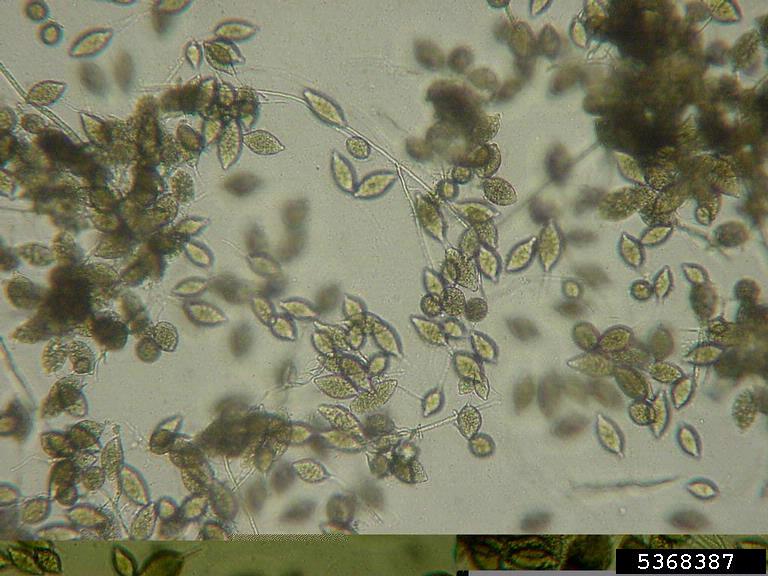Phytophthora Root Rot – What You Need To Know
Water is an integral part of the earth, each species directly or indirectly dependent on water. An individual plant or a crop laid on multi-acres are most of the time water dependent. Water is also one of the main necessities of plants, but you would be shocked to know that this same necessity can cause one the most destructive diseases to plants and crops, Phytophthora. It is the fungus that is caused by the excess of water in the roots and improper drainage system.
What is Phytophthora?
The “Plant-Destroyer”, Phytophthora is one of the numerous subspecies of the fungus. It is also known as an oomycete and indeed an extremely hostile fungus that results in environmental and economic damages. There are currently more than 80 described species of Phytophthora worldwide, and the vast majority of them are plant pathogens, the most destructive pathogens of agricultural crops and forests in the world.
It is a type of water mold and makes the plant unable to absorb water or nutrients because of dead root tissue. The potato farmers worldwide suffer most from one strain of Phytophthora, known as Phytophthora Infestans, it is the most common hurdle for them.
The worst part about the Phytophthora is that if it is found in a certain area, annihilating the area and getting rid of the plagued plants is the most workable thing to do. However, the area is usable once it is cleared of the fungus and it is highly advisable to plant phytophthora-resistant crops in that area.
The non-resistant crops can also be planted but one must ensure that there are ample air-filling space and highly effective drainage system that stops unnecessary water to stay in roots.
How does this destructive disease spread?
The core reason for this destructive disease is water. Phytophthora disease starts to flourish in wet conditions and destroy the roots to absorb water that results in further water accumulation around roots. Its bacterium then further spreads in the other areas of crops following the drainage system as the spores can easily be washed off of infected plants.
The second most common factor that causes its spores to spread is human activities. Within a field, spores are splashed from soil or infected plants to nearby plants, or they are distributed throughout the field as humans, animals, and farm equipment move through or between fields.
So, the main cause of Phytophthora disease is water, but it can be spread via human activities too, therefore, it is important to know the symptoms of this aggressive disease so that further damage can be avoided.
How do you know you have root rot?
Phytophthora may cause severe root rot and the aboveground foliage could have symptoms such as yellowing, wilting, stunting, or interveinal chlorosis (nutrient-deficiency symptoms). The first symptom of Phytophthora on most susceptible plants is the blackening of the stem, from below ground to several inches above the ground.
How to Prevent it?
Although this destructive disease is extremely aggressive and spread rapidly, however, there are certain precautions that if are ensured can stop Phytophthora to grow and spread. Here are some steps that are helpful in avoiding this disease.
- Proper Drainage System
Drainage system must be proper and smooth, the water should not be rested at any place, all the excess water must be drained out completely. The excess of water causes this fungus to grow and then it spreads rapidly.
- Clean Propagation Area
The propagation area has to be the most cleaned part of the nursery. The young plants should be treated with the best quality water and clean tools and container media should be used.
- No Dead Plants
There should not be any dead or sick plant and any weed in the propagation area. You must get rid of all of it.
- Clean Water for Irrigation
You must use clean water for irrigation as Phytophthora species are water molds. The bacterium lives in rivers and ponds and there are high chances of them to be abundant in recirculated water systems.
- No Leafy Debris
Gravel beds or infested soil is the main source of contamination. After the removal of infected plants, the ground under them remains contaminated by leafy debris that has fallen from them. The spores of Phytophthora survive in the top few inches of the ground and when environmental conditions favor their germination several months later, Phytophthora spores can infect the new crop.
- Educate your Staff
You must monitor your crops/plants development progress thoroughly. The employees must be educated enough to know the symptoms of this disease and the causes of it. Train your staff to recognize symptoms of plant diseases and pests, and reward them for reporting any problems.
The Phytophthora disease is the most common disease all over the world, it is not geographic specific and also spreads in multiple ways. We must take care of our plants and should educate ourselves enough to detect its symptoms and must follow all the precautions in order to avoid this dangerous fungus.
About SurVerda Labs
SurVerda Labs is recognized for its innovative products, providing the right solutions that incorporate Plant Wash – a natural disinfectant technology that has surfactant capability – an enhancer for Fertilizers, Fungicides, Pesticides & Herbicides. Don’t let Phythophthora disease sweep away all your hard work and spoil your harvest. Take the necessary action starting today.
For more information and assistance, get in touch with a SurVerda team member. Click here to contact us.





